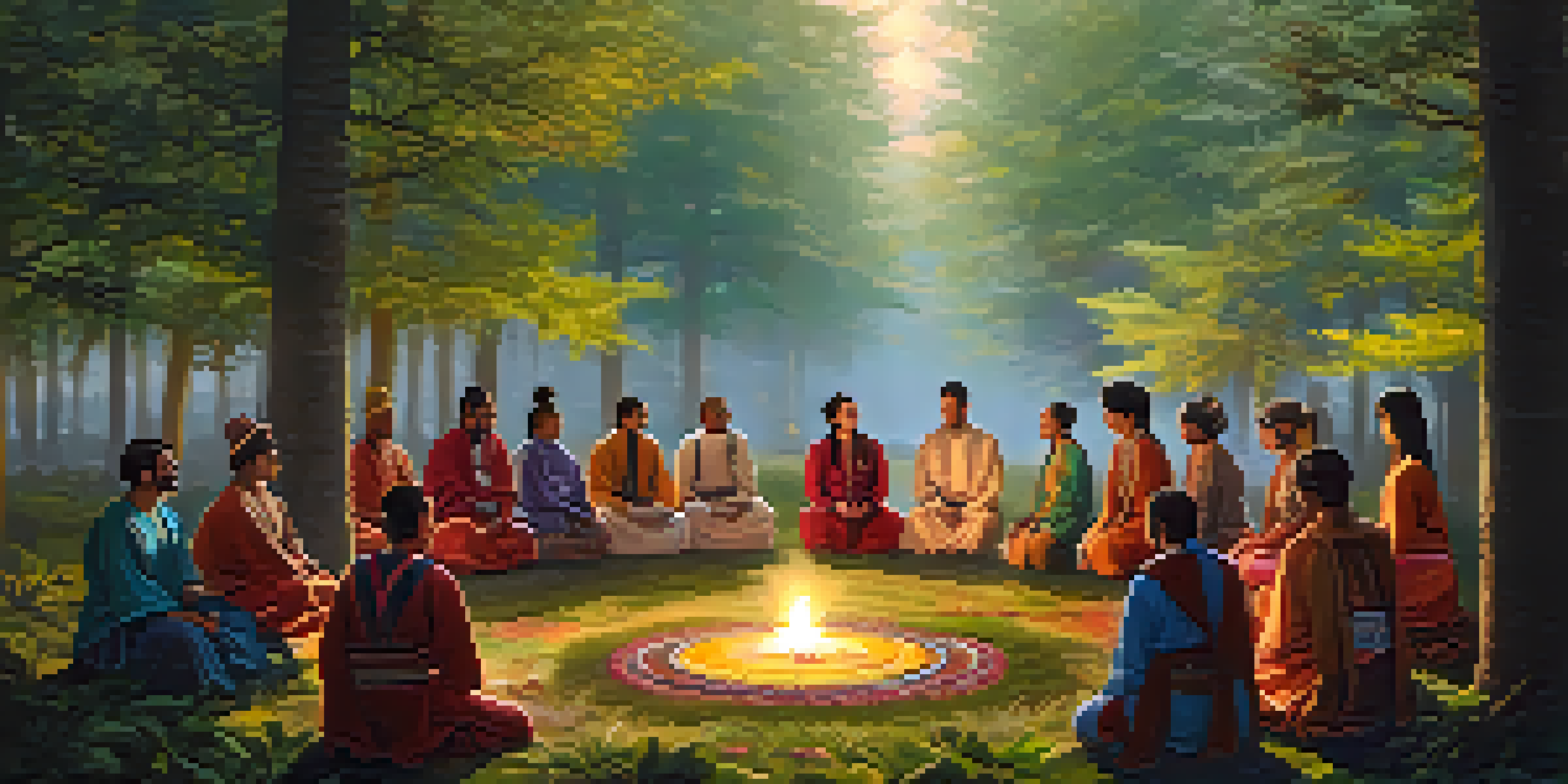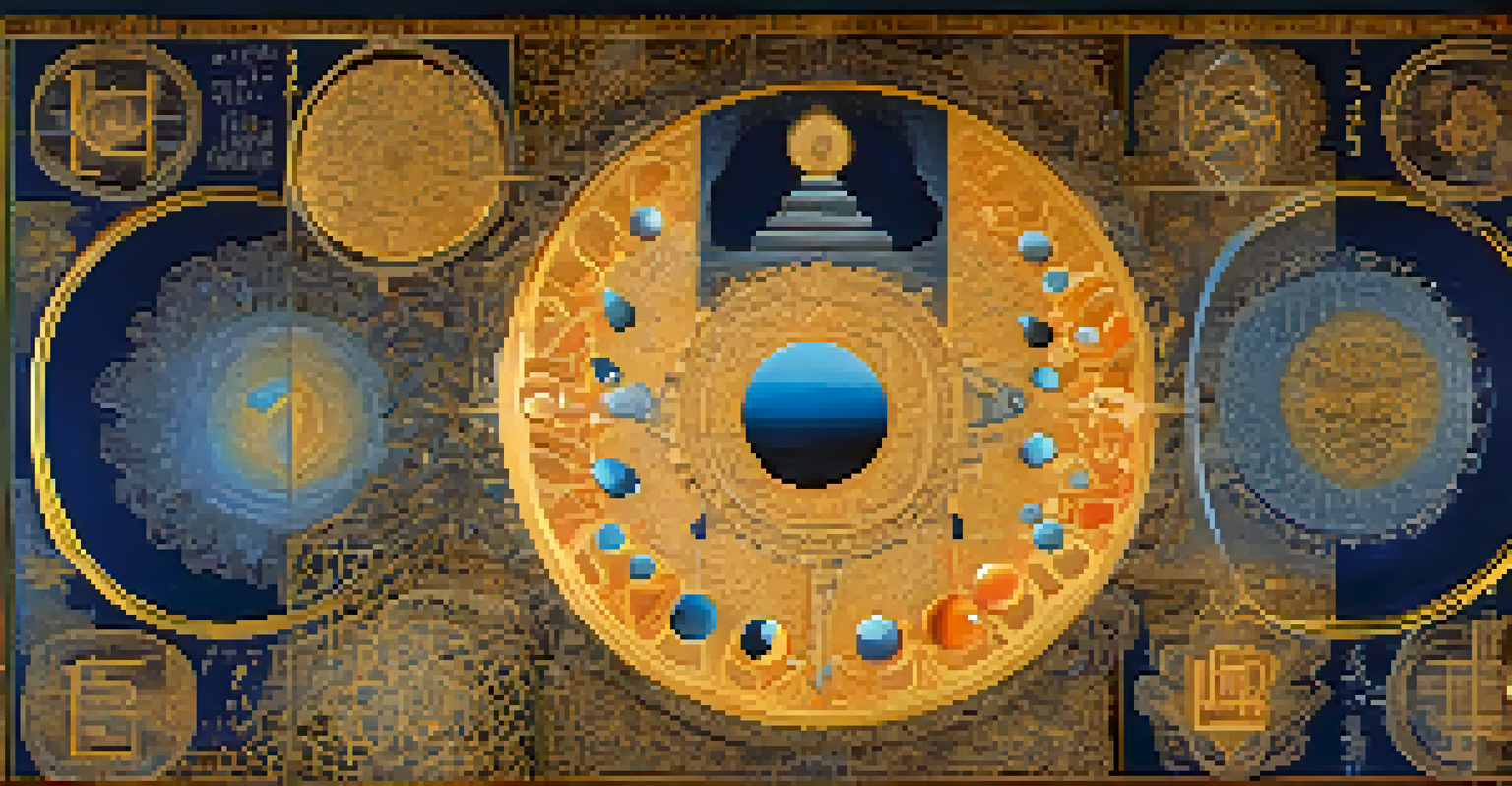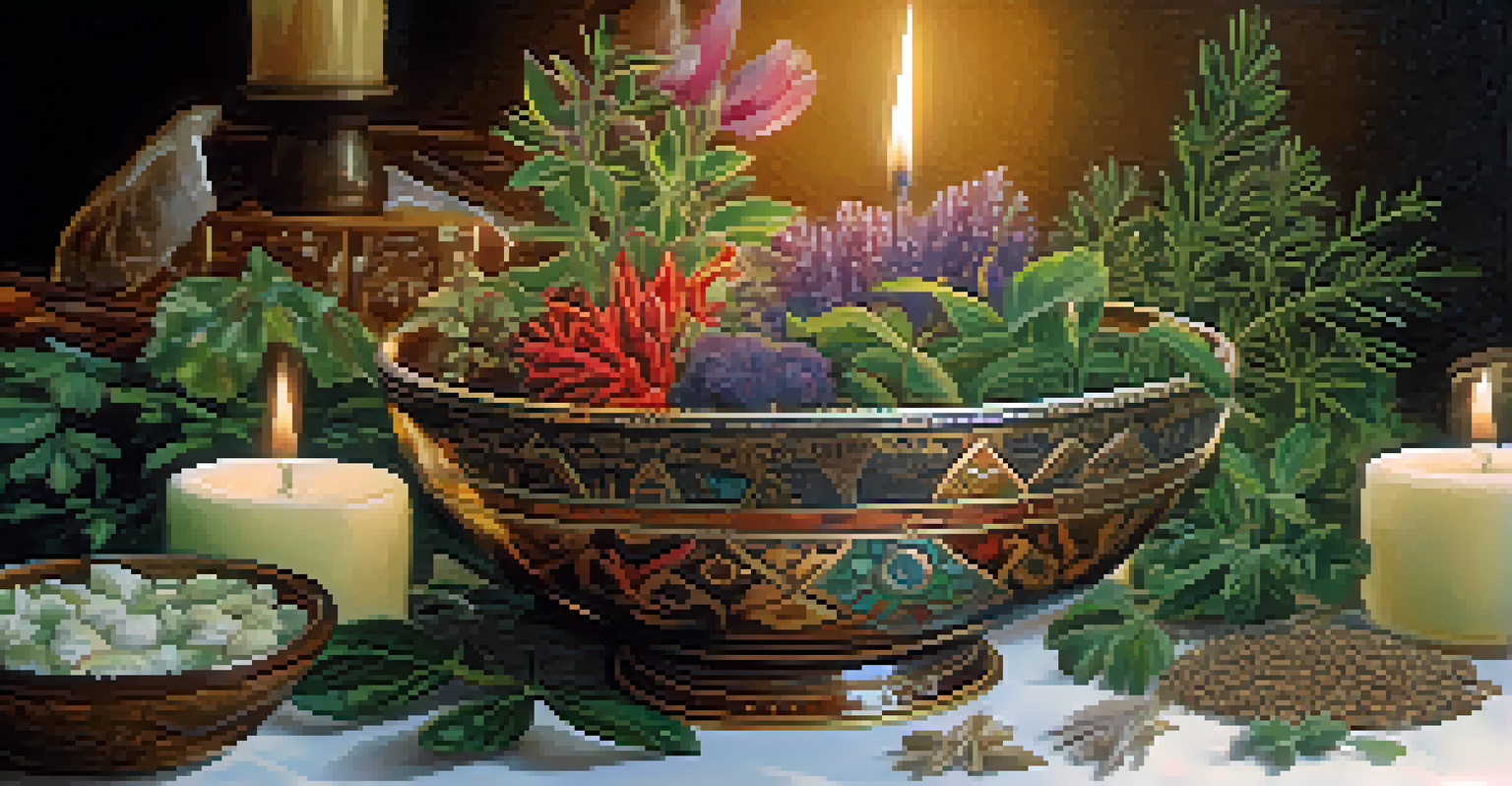Entheogens and Spiritual Practices: A Cultural Connection

What Are Entheogens and Their Role in Spirituality?
Entheogens are substances that can induce altered states of consciousness, often used in religious or spiritual contexts. They have been integral to various cultures for centuries, serving as tools for connecting with the divine or the inner self. Examples include psilocybin mushrooms, ayahuasca, and peyote, each holding unique significance in different traditions.
The experience of the divine is often felt in the presence of others, and the use of entheogens can create that shared experience.
These substances are not just recreational; many believe they can foster profound insights and transformative experiences. For instance, in Indigenous cultures, rituals involving these plants are seen as sacred, helping participants navigate personal and collective challenges. This deep-rooted connection highlights the reverence with which these substances are approached.
Understanding entheogens requires recognizing their cultural and historical contexts. As we delve into the practices that incorporate these substances, it becomes clear that they are more than mere tools; they are gateways to exploring spirituality, community, and the human psyche.
The Historical Use of Entheogens in Indigenous Cultures
Indigenous cultures around the world have long utilized entheogens in their spiritual practices. From the Amazon rainforest, where ayahuasca is used in healing ceremonies, to Native American tribes using peyote in sacred rituals, these practices are steeped in tradition. They provide a sense of belonging and continuity, connecting generations through shared experiences.

These rituals often involve communal gatherings where participants seek guidance, healing, or visions. For example, the Huichol people of Mexico regard peyote as a means to connect with their god. This intertwining of spirituality and community illustrates the profound impact entheogens have on cultural identity and social cohesion.
Entheogens Connect to Spirituality
Entheogens serve as tools for altered states of consciousness, deeply intertwined with cultural and spiritual practices across various traditions.
As modern society becomes more aware of these practices, there is a growing interest in understanding and respecting the wisdom of Indigenous peoples. By learning from these historical uses, contemporary seekers can appreciate the depth of these practices and their significance in fostering spiritual growth.
Entheogens in Eastern Spiritual Traditions
In Eastern spiritual traditions, entheogens also play a vital role, albeit often in more subtle forms. For example, in Hinduism, certain plants and substances are believed to enhance meditation and deepen spiritual awareness. The concept of 'soma,' described in ancient texts, is thought by some scholars to refer to a psychoactive substance used in rituals.
Psychedelics can help us access the deeper parts of ourselves, revealing insights that can lead to meaningful personal transformation.
Buddhism, while generally abstaining from intoxicants, acknowledges the potential for altered states to facilitate deep meditation and insight. Some practitioners explore the intersection of entheogens and mindfulness, seeking to enhance their understanding of consciousness. This blending of practices illustrates how Eastern traditions view the mind and spirit as interconnected.
The cultural significance of entheogens in these traditions underscores their potential to aid in personal transformation. As seekers explore these avenues, they often find that the journey is as important as the destination, leading to new insights about themselves and the universe.
Modern Western Perspectives on Entheogens
In recent years, there has been a resurgence of interest in entheogens within Western cultures, particularly for their therapeutic potential. Research into substances like psilocybin and MDMA has shown promising results for mental health conditions such as depression and PTSD. This has prompted a re-evaluation of how these substances are perceived in society.
The modern movement often emphasizes safe and intentional use, contrasting with the more casual recreational approach of the past. Many practitioners advocate for guided experiences, where users can explore their inner landscapes in a supportive environment. This shift reflects a growing recognition of the deeper spiritual and psychological dimensions of entheogens.
Modern Therapeutic Uses Rise
Recent research highlights the therapeutic potential of entheogens for mental health conditions, prompting a shift toward more intentional and guided use.
As more individuals turn to these substances for healing and growth, the conversation around them continues to evolve. This new perspective invites us to consider not just the effects of entheogens, but also the cultural and spiritual practices that accompany their use.
The Intersection of Science and Spirituality
The relationship between science and spirituality is a fascinating area of exploration, especially regarding entheogens. Recent studies have begun to reveal how these substances can affect brain function, leading to altered states of consciousness. This scientific inquiry complements the spiritual experiences reported by users, creating a bridge between two seemingly disparate worlds.
For example, research has shown that entheogens can promote neuroplasticity—the brain's ability to reorganize itself. This offers insights into how profound experiences can facilitate personal transformation and healing. Such findings encourage a dialogue between scientific and spiritual communities, fostering a more holistic understanding of human experience.
By examining how entheogens influence both the mind and spirit, we can appreciate their role in broader existential questions. This intersection not only enriches our understanding of spirituality but also challenges us to reconsider the nature of consciousness itself.
Ethical Considerations in the Use of Entheogens
As interest in entheogens grows, so do the ethical considerations surrounding their use. It is crucial to approach these substances with respect, understanding their cultural significance and potential impacts. Many Indigenous communities have expressed concerns about the commercialization and appropriation of their sacred practices, highlighting the need for ethical engagement.
Participants should be aware of the historical contexts and the sacredness attributed to entheogens in various cultures. This awareness fosters a sense of responsibility, prompting individuals to honor the traditions from which these practices originate. Engaging with Indigenous knowledge keepers and seeking their guidance can help navigate this complex terrain.
Ethics in Entheogen Use Matter
As interest in entheogens grows, it is essential to respect their cultural significance and approach their use with ethical considerations and responsibility.
Ultimately, ethical considerations encourage a thoughtful exploration of entheogens, reminding us that these experiences are deeply intertwined with human culture and spirituality. As we engage with entheogens, it is vital to prioritize respect, understanding, and reciprocity.
Personal Transformations Through Entheogenic Experiences
Many individuals report profound personal transformations through entheogenic experiences. These journeys often lead to insights about oneself, relationships, and one's place in the universe. Participants frequently describe feelings of connectedness and unity, transcending the boundaries of the ego and fostering a sense of belonging.
For some, these experiences serve as catalysts for significant life changes, prompting individuals to reassess their values and priorities. The clarity gained from these encounters can be life-altering, leading to a renewed sense of purpose or direction. Such transformations highlight the potential of entheogens to facilitate deep personal growth.

However, it’s important to approach these experiences with intention and care. Proper preparation and integration are crucial to ensuring that the insights gained can positively influence one’s life. This emphasis on integration is a reminder that the journey continues long after the experience ends.